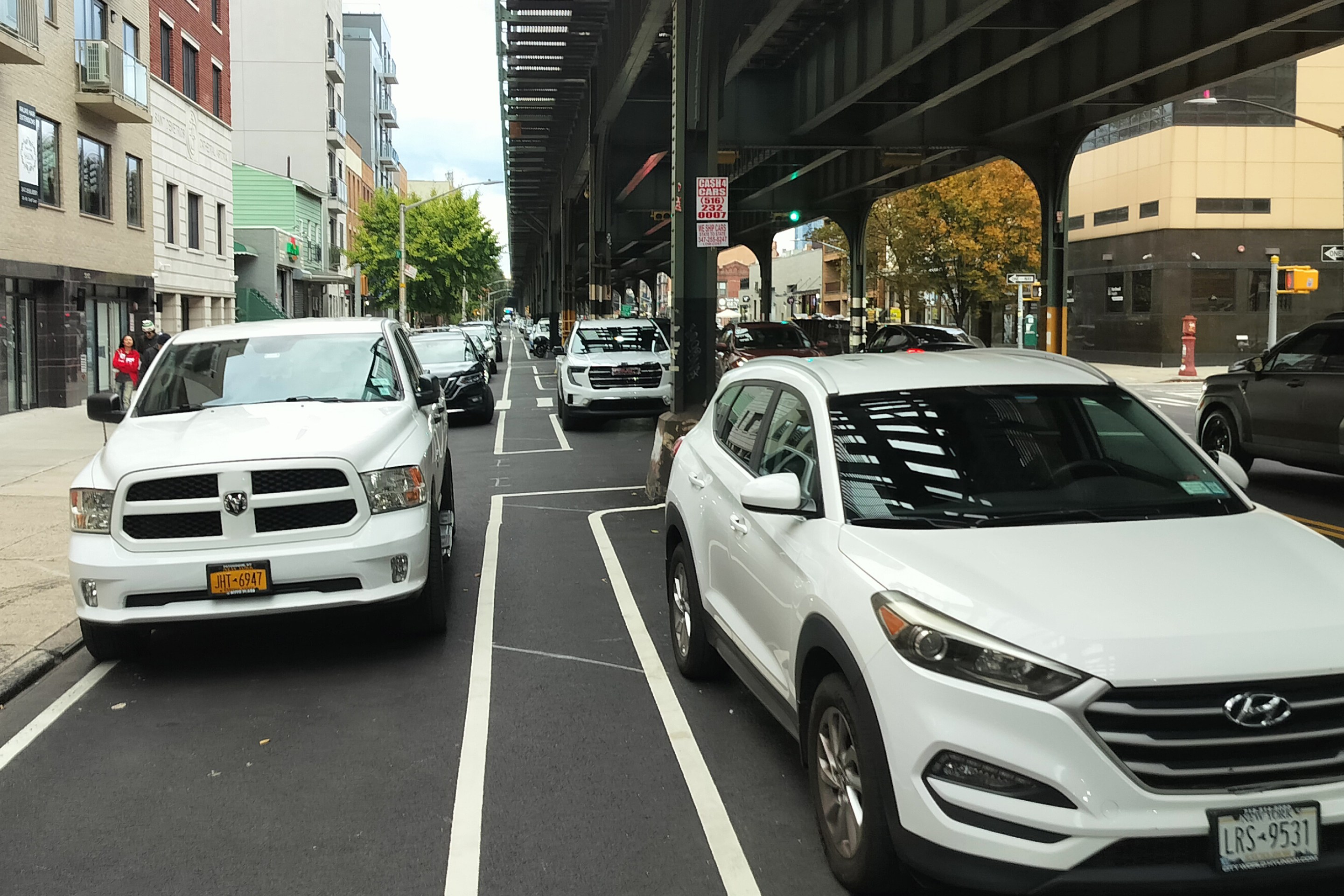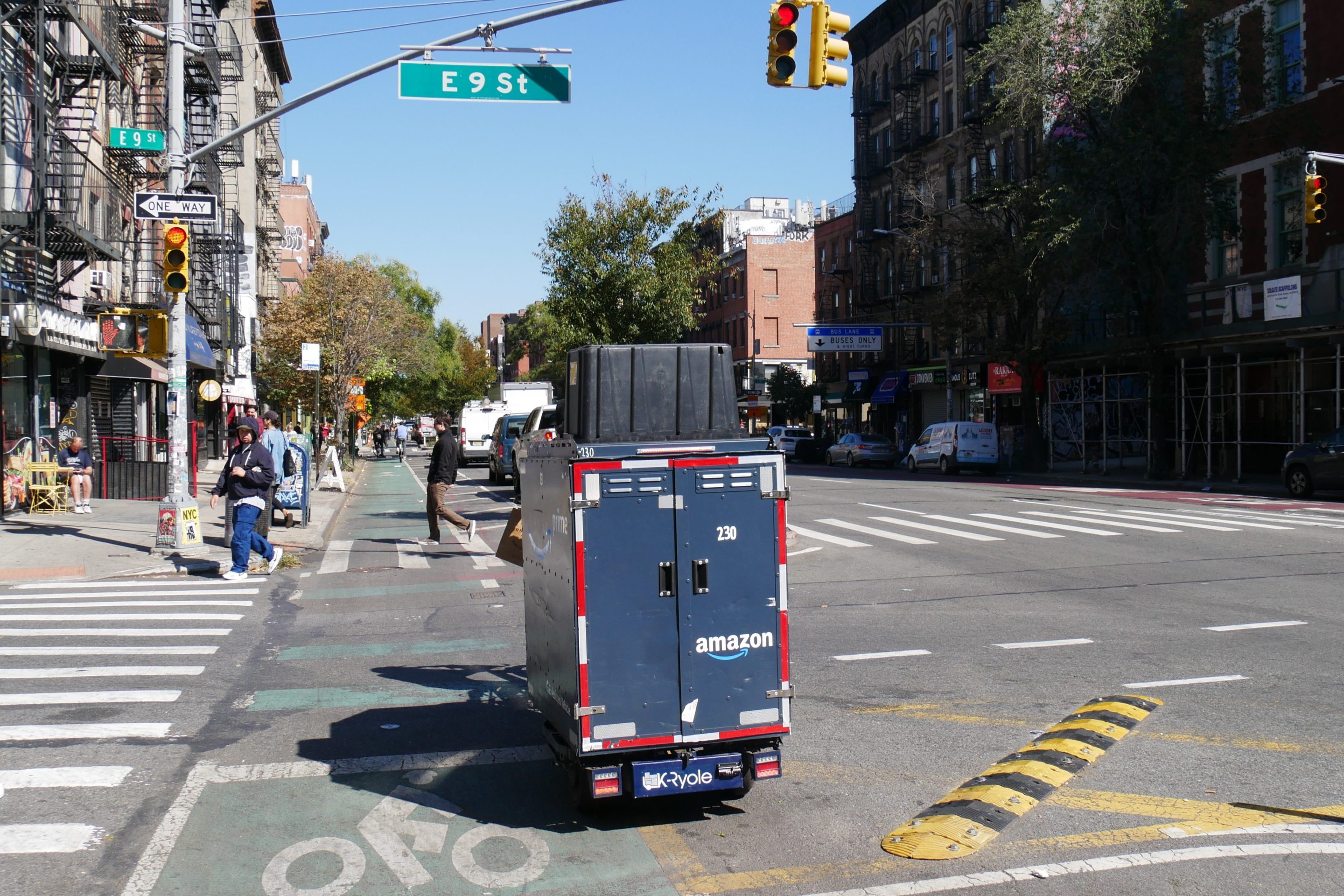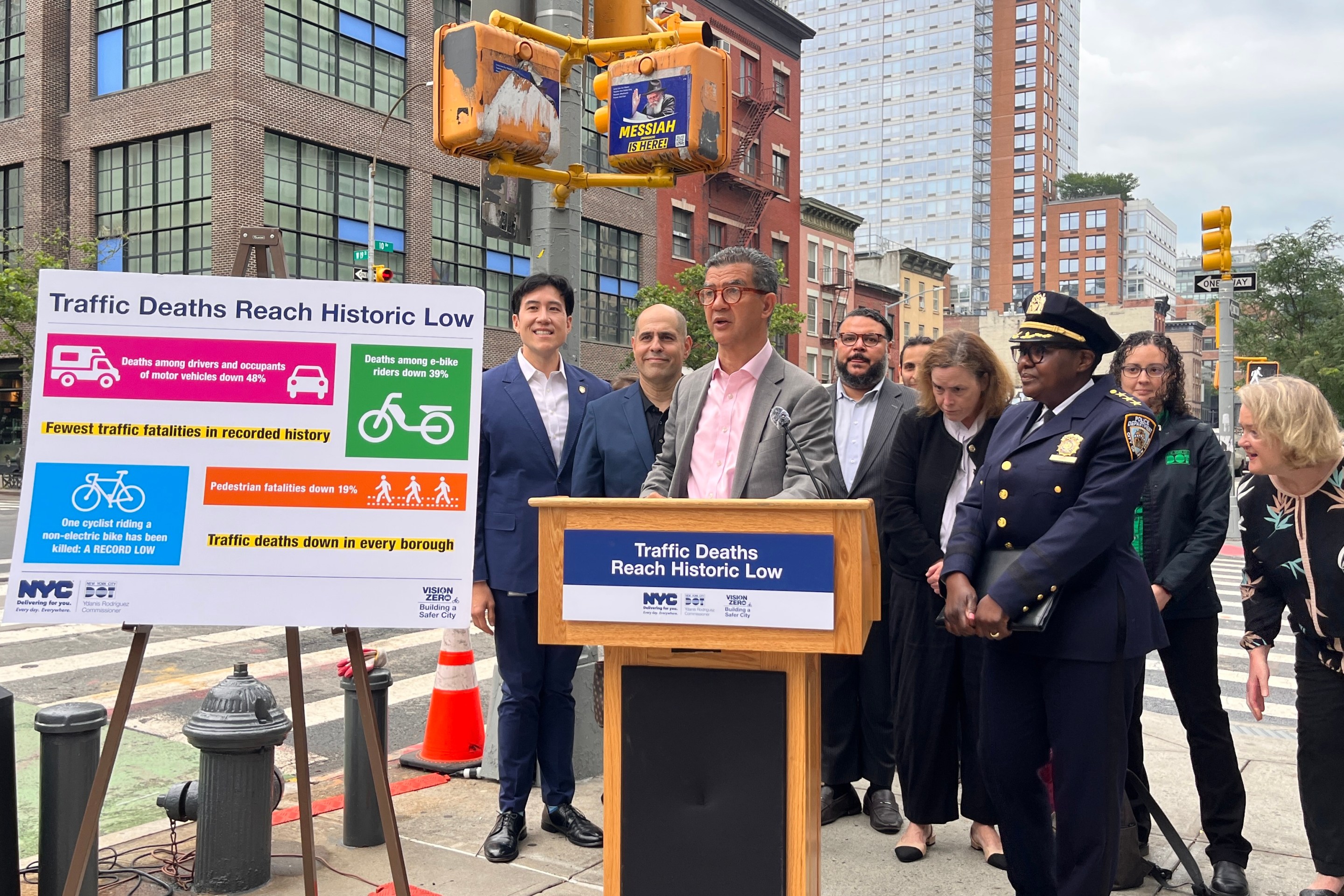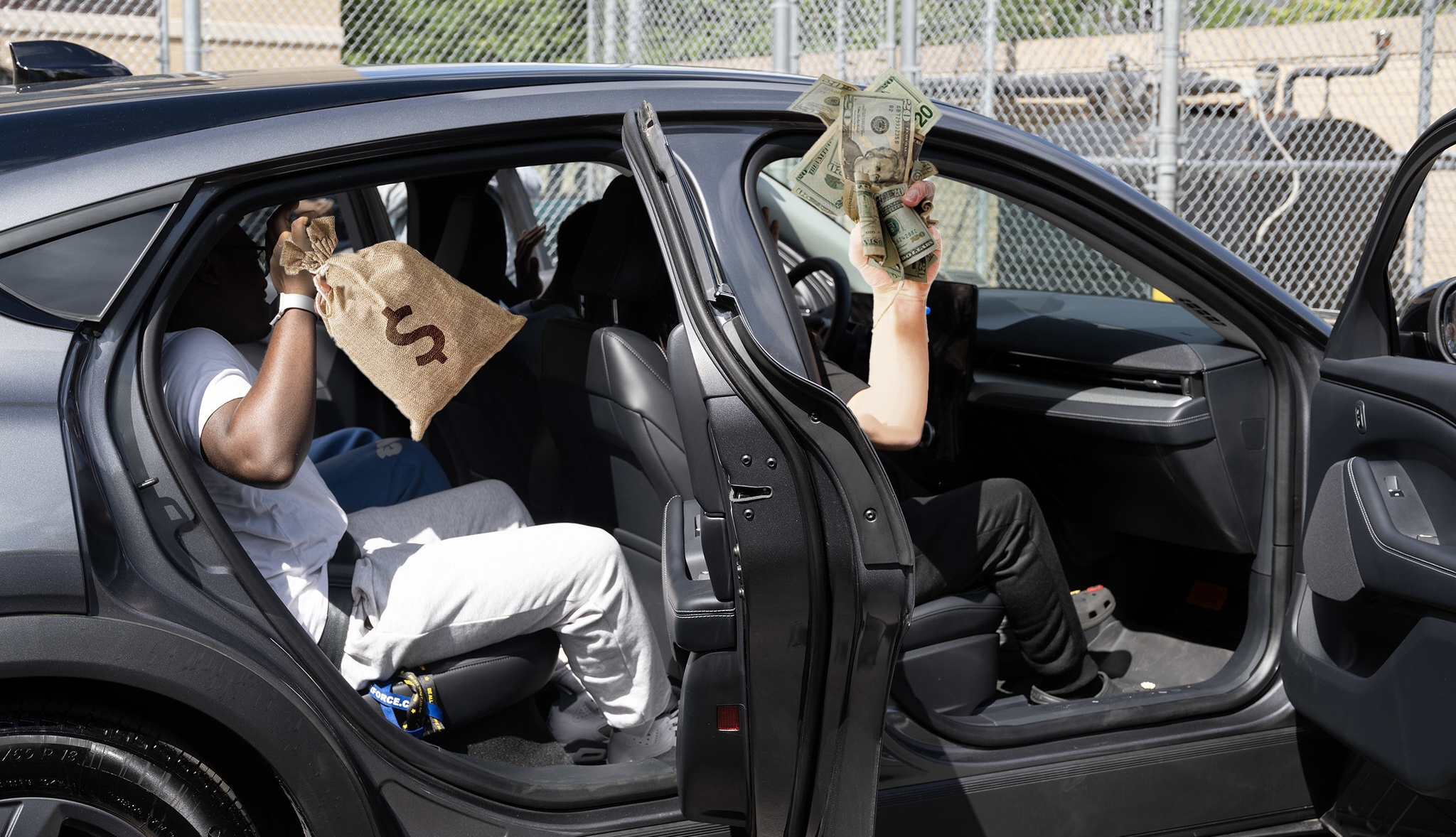
Proposed Dyckman Street redesign, presented by citizens to the CB12 Transpo Committee last February
For the third time this year, residents of Inwood and Washington Heights Monday night presented the Community Board 12 Traffic and Transportation Committee with a vision for a traffic-calmed Dyckman Street. One with a separated bike lane connecting the Henry Hudson
and Harlem River bike paths, sidewalk bulbouts, leading pedestrian intervals, and street trees. A destination corridor where people can shop, stroll and mingle without constantly feeling under siege by untamed auto traffic.
And
for the third time this year, the committee asked these
residents to come back when they have a better idea of what they
want.
Members of Inwood and Washington Heights Livable Streets were hopeful that an audience with Paimaan Lodhi, urban planner with Manhattan Borough President Scott Stringer's office, would help the case for the Dyckman Greenway Connector. But after distributing copies of "Sustainable Streets" guidelines to committee members (it was hard to tell if any of them had heard of the DOT program), Lodhi deflated those hopes. Any action by Stringer's office, he said, would require consensus from CB12.
Just how likely is consensus to emerge that an innovative, people-friendly design for Dyckman, similar to the Ninth Avenue bike path, would be a boon to Upper Manhattan, where just 20 percent of households own a car? To get an idea one only has to tune in to Jim Berlin, the most outspoken member of the transpo committee, if not the whole of CB12. Last night a neighborhood mom told the committee that she feared a pedestrian bridge over Dyckman at Tenth Avenue, used by students at her child's elementary school, was unstable. Berlin, minutes after declaring that any plan to alter Dyckman should not impede auto traffic, agreed that the condition of the bridge is a concern, as it "keeps kids away from a ridiculously dangerous intersection where a school should never have been built in the first place."
In other words, to Berlin and other CB12 members, Dyckman Street is already a connector -- between the West Side Highway and the FDR. Its function as a neighborhood street, used by school children and hundreds of thousands of other non-driving Upper Manhattanites, is purely incidental.
But uptown livable streets advocates have two things working in their favor. One is that Dyckman Street is already slated for new bike lanes, which will presumably connect existing lanes on its east and west ends. Another is that, according to DOT's Josh Orzeck, an unrelated study of Dyckman intersections is currently underway, which Orzeck said would "greatly affect" any redesign plans. Committee members lit up at the mention of the study (which, oddly, Orzeck had apparently not referenced before), for it gave them the perfect opportunity to put off the Greenway connector plan until at least next spring.
Which brings us to another CB12 transpo committee trait. To be fair, chairman Mark Levine -- who is far and away the most enlightened member when it comes to livable streets issues -- had to leave the meeting early, but there was barely a single issue discussed Monday night on which the committee did not delay, defer
or deflect. ("Have you spoken with the precinct?" "Isn't that up to DOT?"
"Shouldn't the parks/safety/some other committee be involved in this?" "Asking the MTA/NYPD for anything is useless.") Granted, I have
only covered CB12 for a short time. But I've attended enough board,
commission and committee meetings to recognize a do-nothing body when I
see one, and I have to say the CB12 Traffic and Transportation Committee bears a striking
resemblance to a do-nothing body.
If the Dyckman Greenway Connector and September's Greenmarket fiasco, which originated with the transpo committee, weren't enough evidence, consider last night's deliberations concerning Bennett Avenue. A handout circulated by Inwood and Washington Heights Livable Streets highlighted seven issues that contribute to dangerous conditions on Bennett, which runs parallel to Broadway for approximately a dozen blocks north of 181st Street in Washington Heights. Among those issues was poor visibility at intersections, where drivers park close enough, sometimes illegally, that other drivers and pedestrians have trouble seeing oncoming traffic.
Berlin, having already given a confounding speech about how infrastructure should not be used to accomplish what the police should be (but, conveniently, are not) doing, allowed that DOT may want to "daylight" intersections on Bennett to improve safety, rather than installing what the committee deemed to be prohibitively expensive bulbouts. However, he said, daylighting would be a "problem" -- particularly at night -- as it would eliminate on-street parking spots. After a modicum of back and forth, mostly regarding the hopelessness of accomplishing much of anything, the committee handed Bennett Avenue off to Orzeck with no clear direction or recommendations.
And thus, the circuit of inaction was again completed.





